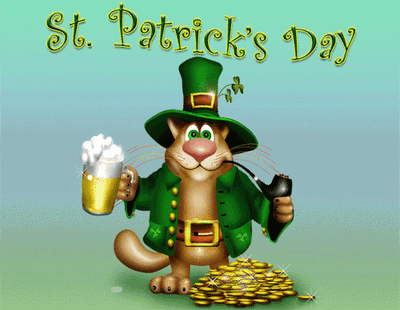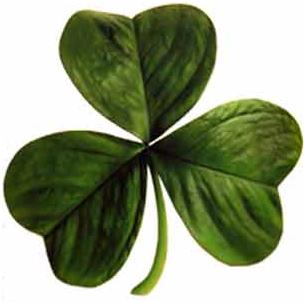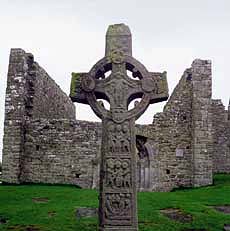St. Patrick’s Day

March 17 is the celebration of the Irish national holiday – St. Patrick’s Day. The celebration is taking place not only in the green Ireland, but also around the world, wherever there are Irish people (or people who are simply fascinated by Irish culture, Irish at heart). Especially a lot of Irish people living in New York, (generally in the U.S. more than the Irish in Ireland itself.) On the day of St. Patrick streets of New York (and other cities, home to the Irish) are huge parades, people dressed in green (green – the national color of Ireland), shamrocks painted on their faces (shamrock – a symbol of the holiday). And because the real Irish, as well as real Ukrainians – are big fans of beer, then that day full of Irish pubs beer hungry Irish gentlemen and ladies. Also, Irish people are passionate and hot, and there simply can not do without the wonderful Irish dancing.
A little talk about the roots of this fun holiday, the perpetrators – the most holy Patrick. So, Patrick’s favorite real Irish people, their national hero and a great Christian saint. The main contribution of Patrick was that in the 5th century, he brought Christianity to Ireland and the Irish people baptized. Of course, Christianity came to the Irish land, and had numerous merchants and travelers, who swam back and forth across the seas. The Roman Empire at that time had long been Christian, but lived out his last days, weakening under the onslaught of young and strong barbarian tribes. At the same territory of Ireland, booming pagan belief known as the religion of the ancient Celts.
By itself, the ancient pagan religion of the Celts is a very interesting and mysterious. All spheres of life of the Celtic tribes dominated the wise, bearded old men, known to all as the Druids. They were priests, judges, teachers and doctors for their contemporaries and had a remarkable knowledge. However, the power of the Roman Empire (which stretched from North Africa to Britain) did not like this religion, and the Celtic Druids saw their implacable enemies, because in their territories constantly tried to destroy them, and the wild (in the opinion of the Roman officials) to convert the Celts in the civilized and obedient citizens of the multinational Roman Empire.
In the 5th century Celts – the carriers of their ancient religion and culture are preserved only in Ireland, and north of the British Islands (later the land became known as Scotland). The Roman Empire was falling apart and the new and the young religion – Christianity steadily gained momentum, spreading throughout Europe.
Here in this historic setting, and our hero was born – Saint Patrick. The exact date and place of birth are unknown, he was born somewhere in Roman Britain in a Christian family of Roman officials. When the boy was 16 years old, he was kidnapped by Irish pirates and sold into slavery in Ireland since it first appeared, and in this country, a Christian among the Gentiles. During the 6 years that he spent in slavery herding sheep, the guy got a strong faith, all day long while in deep prayer. Finally he managed to free themselves from slavery and return to his native Britain, but since then he decides to devote his life to serving God. After some time living and studying the Holy scriptures in one of the Christian monasteries of northern France. Then the monk-missionary returns to the shores of Ireland, determined to carry the Christian wisdom to the Irish people.
Missionary work is going very well, during his previous stay in Ireland as a slave, Patrick was very familiar with the ancient religion of the Celts, and knew all its subtleties. This allowed him to preach Christianity in a simple and understandable to the local population, language. For example, the Holy Trinity: God the Father, God the Son, and Holy Spirit, he explained on the example of the leaves of the sacred to the Celts plants – trefoils.

Irish legends and sagas give Patrick’s magical and miraculous powers, there are plenty of descriptions of magical duels between St. Patrick and the local Druids, in which Patrick defeats all his opponents. According to one legend, Patrick drove out the Irish island of snakes, and indeed, in Ireland, no snakes at all.

Through its activities and titanic work spread Christianity throughout Ireland is very peacefully and harmoniously woven into the culture of the Irish people. As for the old pagan religions it has not undergone any kind of violence and persecution, and was not overthrown, as in other nations and harmoniously united and intertwined in Christianity. This makes it possible to even talk about the unique Irish Christianity, which does not matter what it seems.
One day, Patrick was preaching in a large pagan temple, the altar was a large stone circle (which symbolized the sun, the main deity worshiped the ancient Celts). Instead of destroying pagan symbol, Patrick drove him to the cross. And there was the famous Celtic cross – a symbol of the connection Paganism with Christianity. The gods of the pantheon of Celtic and eventually became absorbed the traits of Christian saints, Druids became monks, and in the territories of pagan temples were formed Christian monasteries.
When he died, this great saint as well is unknown, but the day his memory is noted for nearly -17 March.
